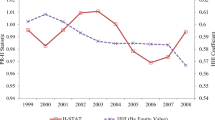Abstract
Savings banks and cooperative banks are important players in the German financial market. However, we know very little about their default risk, because these banks usually resolve financial distress within their own organizations, which means that outsiders can-not observe defaults. In this paper I use a new dataset that contains information about financial distress and financial strength of all German savings banks and cooperative banks. The Deutsche Bundesbank has gathered the data for microprudential supervision. Thus, the data have never before been exploited for statistical risk assessment. I use the data to identify the main drivers of savings banks’ and cooperative banks’ risk and to detect structural differences between the two groups. To do so, I estimate a default pre-diction model. I also analyze the impact of macroeconomic information for forecasting banks’ defaults. Recent findings for the U.S. have cast some doubt on the usefulness of macroeconomic information for banks’ risk assessment. Contrary to recent literature, I find that macroeconomic information significantly improves default forecasts.
Similar content being viewed by others
References
Altman, Edward I. (1968), Financial Ratios, discriminant analysis and the prediction of corporate bankruptcy, The Journal of Finance 23, 589–609.
Beaver, William H. (1968), Alternative accounting measures as predictors of failure, The Accounting Review 43, 113–122.
Chamberlain, Gary (1980), Analysis of covariance with qualitative data, Review of Economic Studies 47, 225–238.
Cole, Rebel A. and Jeffery W. Gunther (1995), Separating the likelihood and timing of bank failure, Journal of Banking & Finance 19, 1073–1089.
Deutsche Bundesbank (2004), Banking statistics, Statistical supplement to the Monthly Report 1, June.
Engelmann, Bernd, Evelyn Hayden, and Dirk Tasche (2003), Testing rating accuracy, Risk 16, 82–86.
Estrella, Arturo, Sangkyun Park, and Stavros Peristiani (2000), Capital ratios as predictors of bank failure, Federal Reserve Bank of New York: Economic Policy Review, July, 33–52.
Falkenstein Eric, Andrew Boral, and Lea Carty (2000), RiscCalc private model: Moody’s default model for private firms, Moody’s Investors Service.
Hamerle, Alfred, Thilo Liebig, and Harald Scheule (2004), Forecasting credit portfolio risk, Deutsche Bundesbank Discussion Paper, Series 2, No. 01/2004.
Hosmer, David W. and Stanley Lemeshow (2000), Applied logistic regression, 2nd ed., New York et al.: Wiley.
IMF (2003), Germany: Financial System Stability Assessment, www.imf.org.
Kalbfleisch, John D. and Ross L. Prentice (1980), The statistical analysis of failure time data, New York et al.: Wiley.
Kocagil, Ahmed E., Alexander Reyngold, Roger M. Stein, and Eduardo Ibarra (2002), Moody’s RiskCalc model for privately-held U.S. banks, Moody’s Investors Service.
Lane, William R., Stephen W. Looney, and James W. Wansley (1986), An application of the Cox proportional hazards model to bank failure, Journal of Banking and Finance 10, 511–531.
Lennox, Clive (1999), Identifying failing companies: A reevaluation of the logit, probit and DA approaches, Journal of Economics and Business 51, 347–364.
Martin, Daniel (1977), Early warning of bank failure, Journal of Banking and Finance 1, 249–276.
Molina, Carlos A. (2002), Predicting bank failures using a hazard model: the Venezuelan banking crisis, Emerging markets review 2, 31–50.
Moody’s Investors Service (2003), Banking System Outlook — Germany, www.moodys.com.
Nuxoll, Daniel A. (2003), The contribution of economic data to bank-failure models, Working Paper, FDIC.
Porath, Daniel (2004), Estimating probabilities of default for German savings banks and credit cooperatives, Deutsche Bundesbank Discussion Paper, Series 2, 06/2004.
Pregibon, Daryl (1981), Logistic regression diagnostics, Annals of Statistics 9, 705–724.
Schmidt, Reinhard H. and Marcel Tyrell (2004), What constitutes a financial system in general and the German financial system in particular?, in Jan P. Krahnen and Reinhard H. Schmidt (eds.), The German Financial System, Oxford: Oxford University Press, 19–67.
Shumway, Tyler (2001), Forecasting bankruptcy more accurately: A simple hazard model, Journal of Business 74, 101–124.
Sinkey, Joseph (1975), A multivariate statistical analysis of the characteristics of problem banks, Journal of Finance 30, 21–36.
Silverman, Bernard W. (1986), Density estimation for statistics and data analysis, London: Champman & Hall.
Zeger, Scott and Kung-Yee Liang (1986), Longitudinal data analysis for discrete and continuous outcomes, Biometrics 42, 121–130.
Author information
Authors and Affiliations
Corresponding author
Rights and permissions
About this article
Cite this article
Porath, D. Estimating Probabilities of Default for German Savings Banks and Credit Cooperatives. Schmalenbach Bus Rev 58, 214–233 (2006). https://doi.org/10.1007/BF03396732
Published:
Issue Date:
DOI: https://doi.org/10.1007/BF03396732




